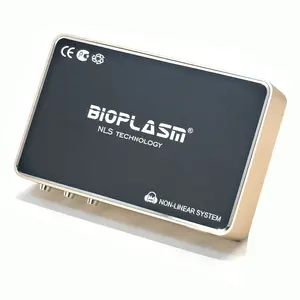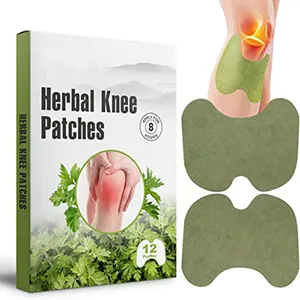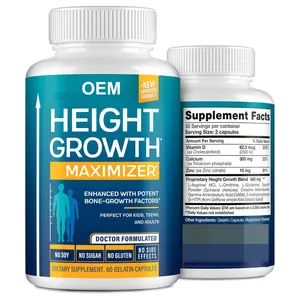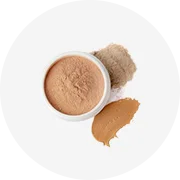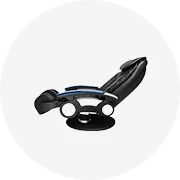Phổ biến trong ngành của bạn

Tự làm trống Eyeshadow Palette casemakeup bao bì Eyeshadow Palette 1 màu
0,20 US$ - 0,25 US$
Đơn hàng tối thiểu: 6000 Cái


Matte Son Môi Nhãn Hiệu Riêng Không Thấm Nước Matte Và Ánh Sáng Ánh Sáng Trang Điểm Palette Lâu Dài Không Thấm Nước Bóng Mắt Eyeshadow Palette
0,99 US$ - 3,99 US$
Đơn hàng tối thiểu: 2 Cái
Vận chuyển mỗi chiếc: 5,22 US$


Tùy chỉnh trang điểm mỹ phẩm óng ánh đa Chrome cầu vồng Aurora Tắc Kè Hoa long lanh Eyeshadow lỏng sắc tố Sẵn sàng vận chuyển
Sẵn sàng vận chuyển
 Sẵn sàng vận chuyển
Sẵn sàng vận chuyển2,10 US$ - 2,60 US$
Đơn hàng tối thiểu: 50 Gram
Vận chuyển mỗi chiếc: 1,33 US$


Bán Buôn Vegan Mỹ Phẩm Tùy Chỉnh Trang Điểm Bóng Mắt Làm Cho Riêng Của Bạn Eyeshadow Palette Nhãn Hiệu Riêng
2,50 US$ - 4,50 US$
Đơn hàng tối thiểu: 1 Cái
Vận chuyển mỗi chiếc: 9,74 US$


Biểu tượng tùy chỉnh cao sắc tố bơ kết cấu 16 màu sắc lấp lánh kim loại vàng Bronze Champagne ánh sáng lung linh kim cương Eyeshadow
Sẵn sàng vận chuyển
1,35 US$ - 1,90 US$
Đơn hàng tối thiểu: 3 Cái
Vận chuyển mỗi chiếc: 2,00 US$


Mỹ phẩm chất lượng tốt không có thương hiệu long lanh bán buôn DIY Eye Shadow cơ sở 15g Eyeshadow Primer keo long lanh Eyeshadow Primer
Sẵn sàng vận chuyển
1,60 US$ - 2,50 US$
Đơn hàng tối thiểu: 1 Cái
Vận chuyển mỗi chiếc: 35,31 US$

Kem Che Khuyết Điểm Tốt Nhất Kem Mắt Tự Làm Kem Lót Nhãn Hiệu Riêng Lâu Trôi Trang Điểm Phấn Nền Phấn Mắt
Sẵn sàng vận chuyển
1,60 US$ - 1,80 US$
Đơn hàng tối thiểu: 2 Cái
Vận chuyển mỗi chiếc: 14,07 US$

Phấn Nền Trang Điểm Tự Làm Lâu Trôi Không Có Logo Nhãn Hiệu Riêng Phấn Mắt Trang Điểm
Sẵn sàng vận chuyển
0,50 US$ - 1,80 US$
Đơn hàng tối thiểu: 2 Cái
Vận chuyển mỗi chiếc: 15,00 US$

50 Cái Tạo Của Riêng Bạn Thương Hiệu Từ Trang Điểm Pallet 28 Màu Eye Shadow Palettes Hộp Màu Hồng Eyeshadow Cơ Sở
2,20 US$ - 2,80 US$
Đơn hàng tối thiểu: 5 Cái

Phấn Màu Hình Trái Tim Tùy Chỉnh Phấn Nền Mắt Đóng Gói 4 Màu Bảng Phấn Mắt Màu Bướm Trang Điểm Hàng Ngày Tự Làm
0,93 US$ - 2,09 US$
Đơn hàng tối thiểu: 3 Cái
Vận chuyển mỗi chiếc: 10,13 US$

Chuyên Nghiệp Trang Điểm Chuyên Nghiệp Tùy Chỉnh Eyeshadow Cơ Sở Palette Nhãn Hiệu Riêng
Sẵn sàng vận chuyển
3,55 US$ - 4,58 US$
Đơn hàng tối thiểu: 1 Cái
Vận chuyển mỗi chiếc: 4,38 US$

Bán Buôn DIY 9 Màu Eyeshadow Palette Cao Pigment Eyeshadow Cơ Sở Nhãn Hiệu Riêng
Sẵn sàng vận chuyển
3,20 US$ - 3,60 US$
Đơn hàng tối thiểu: 50 Cái
Vận chuyển mỗi chiếc: 1,03 US$
Các tìm kiếm liên quan:
cơ sở phấn mắt plouisenhựa duy nhất eyeshadow containercơ sở cho bóng mắtphấn má hồngkhuôn bóng mắt bằng nhựađế phấn mắt trắngcơ sở phấn mắt plouiseđế phấn mắtcơ sở phấn mắt kem trắngkem phấn mắtpat mcgrath duy nhất phấn mắt12 màu mắt nakenars hardwired eyeshadowphấn mắt duy nhất 26mmnyx phấn mắt cơ sở nyx

Bán Sỉ Logo Của Bạn Long Lanh Trang Điểm Bóng Mắt Tùy Chỉnh Chuyên Nghiệp Eyeshadow Palette Nhãn Hiệu Riêng Eyeshadow Cơ Sở
0,50 US$ - 4,00 US$
Đơn hàng tối thiểu: 30 Cái

Phấn Mắt Dạng Kem Đơn Trang Điểm Thuần Chay Kem Phấn Mắt Dạng Bột Màu Cao Không Dầu Riêng Lẻ Mẫu Tự Làm
0,37 US$ - 0,61 US$
Đơn hàng tối thiểu: 1000 Bộ
Vận chuyển mỗi chiếc: 12,03 US$

Ochain nhà máy bán hàng trực tiếp không thấm nước đa màu sắc ban đầu DIY cơ sở Eyeshadow Palette
1,99 US$ - 3,40 US$
Đơn hàng tối thiểu: 50 Cái
Vận chuyển mỗi chiếc: 5,30 US$

Sơn Lót Keo Lấp Lánh Chất Lượng Tốt Sơn Lót Nền Phấn Mắt Tự Làm Phấn Mắt
Sẵn sàng vận chuyển
0,60 US$ - 2,50 US$
Đơn hàng tối thiểu: 2 Cái
Vận chuyển mỗi chiếc: 15,47 US$

Tự Làm Thấp MOQ Fard Một Paupiere 9 Màu Eyeshadow Palette Nhãn Hiệu Riêng Không Thấm Nước Eyeshadow Cơ Sở Bóng Mắt
Sẵn sàng vận chuyển
2,90 US$ - 3,99 US$
Đơn hàng tối thiểu: 2 Cái
Vận chuyển mỗi chiếc: 10,52 US$

Phụ Nữ Thời Trang Eyeshadow Palette Hữu Cơ Trang Điểm 20 Màu Bóng Mắt Palette Cosmatics Trang Điểm Mắt Cơ Sở Nhà Cung Cấp 2024
1,18 US$ - 3,00 US$
Đơn hàng tối thiểu: 12000 Cái

120 đầy màu sắc tự làm kim loại thuần chay trang điểm cơ sở nhãn hiệu riêng Eye Shadow Palette biểu tượng tùy chỉnh Brown Big Eyeshadow Palette bán buôn

4,30 US$
Đơn hàng tối thiểu: 480 Cái
Vận chuyển mỗi chiếc: 10,34 US$

HANDAIYAN 12 Màu Rose Gold Bao Bì Mỹ Phẩm Eyeshadow Lâu Dài Eyeshadow Cơ Sở Công Thức Phong Phú Tự Làm Eyeshadow Palette Chọn
1,39 US$ - 1,67 US$
Đơn hàng tối thiểu: 10 Cái

Bán buôn tự làm bóng mắt căn cứ tùy chỉnh Eyeshadow Palette dropshipping Longlasting logo của bạn trang điểm long lanh Eyeshadow Sẵn sàng vận chuyển
Sẵn sàng vận chuyển
 Sẵn sàng vận chuyển
Sẵn sàng vận chuyển3,10 US$ - 3,80 US$
Đơn hàng tối thiểu: 3 Cái
Vận chuyển mỗi chiếc: 6,02 US$

Quà Tặng Giáng Sinh Oem Tự Làm Nhãn Hiệu Riêng Eye Shadow Rỗng Từ Palette Bán Buôn
Sẵn sàng vận chuyển
2,35 US$ - 3,20 US$
Đơn hàng tối thiểu: 2 Cái
Vận chuyển mỗi chiếc: 9,63 US$

Mỹ phẩm lỏng bạc duy nhất sắc tố Holographic đa Chrome Eyeshadow Glitter Flakes Gel
3,62 US$ - 4,05 US$
Đơn hàng tối thiểu: 50 Cái
Vận chuyển mỗi chiếc: 2,83 US$

OCHAIN Bán Sỉ Biểu Tượng Tùy Chỉnh Tự Làm Trang Điểm Nhãn Hiệu Riêng Bảng Màu Phấn Mắt Lấp Lánh
2,19 US$ - 3,60 US$
Đơn hàng tối thiểu: 50 Cái

Bảng Phấn Mắt Tự Làm Lấp Lánh Chất Liệu Phấn Mắt Lấp Lánh Tự Làm Với 12 Màu Bảng Phấn Mắt Lấp Lánh Tự Làm Để Trang Điểm
0,43 US$ - 0,72 US$
Đơn hàng tối thiểu: 1 Cái

18 Màu Bột Màu Sắc Tố Cao Tùy Chỉnh Nhãn Hiệu Riêng Rỗng Trang Điểm Eyeshadow Palette
Sẵn sàng vận chuyển
3,69 US$ - 4,66 US$
Đơn hàng tối thiểu: 2 Cái
Vận chuyển mỗi chiếc: 12,00 US$

Bán buôn cao sắc tố bóng mắt Palette 9 DIY tùy chỉnh vuông Eyeshadow Pan làm cho logo của riêng bạn
Sẵn sàng vận chuyển
1,99 US$ - 4,00 US$
Đơn hàng tối thiểu: 50 Cái
Vận chuyển mỗi chiếc: 7,66 US$

Chuyên Nghiệp 9-Màu Tàn Ác-Miễn Phí Eyeshadow Palette Không Thấm Nước Matte Ánh Sáng Mờ Bột Tùy Chỉnh Tự Làm Cho Sử Dụng Hàng Ngày Cho Cô Gái
1,20 US$ - 1,35 US$
Đơn hàng tối thiểu: 50 Cái
Vận chuyển mỗi chiếc: 0,89 US$

Tự Làm Sang Trọng Cao Sắc Tố Trang Điểm Palletes 117 Màu Sắc Eyeshadow Palette Biểu Tượng Tùy Chỉnh Tàn Ác Miễn Phí Khỏa Thân Eyeshadow Palette Sẵn sàng vận chuyển
Sẵn sàng vận chuyển
 Sẵn sàng vận chuyển
Sẵn sàng vận chuyển4,00 US$ - 5,50 US$
Đơn hàng tối thiểu: 10 Bộ
Vận chuyển mỗi chiếc: 7,93 US$

Bảng Màu Đen Bảng Phấn Mắt Kéo Dài Tùy Chỉnh Trang Điểm Phấn Mắt Nhãn Hiệu Riêng
Sẵn sàng vận chuyển
0,80 US$ - 5,00 US$
Đơn hàng tối thiểu: 1 Cái
Vận chuyển mỗi chiếc: 6,17 US$

Multichrome sắc tố trang điểm bàn chải thiết lập Nhà cung cấp Palette nhà sản xuất Vegan nhãn hiệu riêng DIY bao bì hộp Primer cơ sở Eyeshadow
1,00 US$ - 4,50 US$
Đơn hàng tối thiểu: 5 Cái

Tùy Chỉnh Make Up Eye Shadow Palette Diy Sắc Tố Mỹ Phẩm Pallette Nhãn Hiệu Riêng Eyeshadow Palette Pallet Bóng Mắt
Sẵn sàng vận chuyển
3,60 US$ - 3,80 US$
Đơn hàng tối thiểu: 50 Cái
Vận chuyển mỗi chiếc: 2,65 US$

Tùy Chỉnh 9 Màu Sắc Tự Làm Lâu Dài Vegan Cao Sắc Tố Matte Trang Điểm Sang Trọng Multichrome Nhãn Hiệu Riêng Long Lanh Eyeshadow Palette
Sẵn sàng vận chuyển
1,79 US$ - 2,69 US$
Đơn hàng tối thiểu: 10 Cái
Vận chuyển mỗi chiếc: 3,90 US$

Nhãn Hiệu Prvate OEM Keo Trang Điểm Lâu Trôi Lấp Lánh Phấn Nền Phấn Mắt
Sẵn sàng vận chuyển
1,28 US$ - 1,85 US$
Đơn hàng tối thiểu: 3 Cái
Vận chuyển mỗi chiếc: 2,00 US$

Tùy Chỉnh Nhãn Hiệu Riêng 9 Colors Multichrome Vẻ Đẹp Tráng Men Eyeshadow Cơ Sở Từ Big Eye Glitters Hàn Quốc Bóng Mắt Với Gương
2,70 US$ - 3,00 US$
Đơn hàng tối thiểu: 100 Cái

Bảng Màu Vẽ Cơ Thể Và Mặt Dầu Ăn Chay Bền Lâu Bảng Màu Sơn Dầu Trang Điểm Bán Chạy Nhất
Sẵn sàng vận chuyển
0,99 US$ - 2,50 US$
Đơn hàng tối thiểu: 2 Cái
Vận chuyển mỗi chiếc: 15,45 US$

Bảng Phấn Mắt Tùy Chỉnh Nhãn Hiệu Riêng Chất Lượng Cao Trang Điểm Phấn Mắt
1,80 US$ - 2,50 US$
Đơn hàng tối thiểu: 100 Cái

Hộp Bảng Phấn Mắt Rỗng Sản Phẩm Làm Đẹp Hình Tròn BảNg Trang Điểm Để Đánh Bóng Mắt Hộp Các Tông Tự Làm Bột Khô 30G
0,50 US$ - 1,00 US$
Đơn hàng tối thiểu: 10 Cái
Vận chuyển mỗi chiếc: 2,07 US$

Bảng Phấn Mắt Đơn Màu Tím 6 Màu Tự Làm Không Logo
Sẵn sàng vận chuyển
0,60 US$ - 2,00 US$
Đơn hàng tối thiểu: 1 Cái
Vận chuyển mỗi chiếc: 4,60 US$

Trung tính không có logo long lanh Tắc Kè Hoa Sequins thạch bóng mắt Kem cơ sở keo trang web quốc tế Halloween trang điểm
0,87 US$ - 0,99 US$
Đơn hàng tối thiểu: 3 Cái
Các danh mục hàng đầu
Giới thiệu về đế phấn mắt tự làm
Mua toàn thân đế phấn mắt tự làm từ Alibaba.com để trải nghiệm kết quả đặc biệt. Những thiết bị này rất quan trọng trong việc cung cấp liệu pháp đẳng cấp thế giới cho người dùng với tính linh hoạt và nhiều khả năng của chúng. đế phấn mắt tự làm có thể di động và dễ mang theo, làm cho chúng linh hoạt để sử dụng trong mọi cài đặt có sẵn. Những sản phẩm tiện lợi này được sử dụng trên ghế, sàn nhà và giường giúp chúng có thể thích nghi để sử dụng ở mọi nơi.
Những sản phẩm hiệu suất cao này đế phấn mắt tự làm mang lại sự thư giãn vô song và làm dịu cơ thể để giúp loại bỏ căng thẳng cơ bắp. Những thiết bị tự chăm sóc này có động cơ tạo ra rung động để nhắm vào các bộ phận cơ thể có cơ bắp mệt mỏi để giúp loại bỏ các căng thẳng trong đó. Có thể điều chỉnh độ rung để người dùng lựa chọn cường độ phù hợp nhất với cơ thể của mình. Nút rung nhắm mục tiêu đến tất cả các bộ phận cơ thể cho đến cổ để giúp loại bỏ tình trạng căng cơ cho một buổi trị liệu thỏa mãn.
Các đế phấn mắt tự làm này tại Alibaba.com sử dụng liệu pháp nhiệt để làm dịu các cơ được cho là căng và gây khó chịu. Nhiệt độ nhẹ tạo ra làm lỏng các cơ căng cứng và căng cứng trong toàn bộ cơ thể, giúp người dùng nhẹ nhõm hơn để có một hệ thống cơ hoạt động bình thường. Nhiệt rất quan trọng trong việc tiếp cận những phần ẩn mà rung động không thể tiếp cận, để giúp loại bỏ sự mệt mỏi của cơ bắp.
Các ưu đãi giảm giá và chiết khấu trên đế phấn mắt tự làm từ Aliababa.com là ưu đãi dành cho các nhà bán buôn và các công ty chủ chốt trong ngành chăm sóc sức khỏe. rằng chất lượng của nhà cung cấp được đảm bảo và sự lựa chọn là vô tận. Người bán buôn được đảm bảo lợi nhuận khi bán cho người bán lẻ; duyệt qua thị trường này để tìm các sản phẩm chất lượng cao và chọn chúng từ các danh mục để có nhiều lựa chọn.
Những sản phẩm hiệu suất cao này đế phấn mắt tự làm mang lại sự thư giãn vô song và làm dịu cơ thể để giúp loại bỏ căng thẳng cơ bắp. Những thiết bị tự chăm sóc này có động cơ tạo ra rung động để nhắm vào các bộ phận cơ thể có cơ bắp mệt mỏi để giúp loại bỏ các căng thẳng trong đó. Có thể điều chỉnh độ rung để người dùng lựa chọn cường độ phù hợp nhất với cơ thể của mình. Nút rung nhắm mục tiêu đến tất cả các bộ phận cơ thể cho đến cổ để giúp loại bỏ tình trạng căng cơ cho một buổi trị liệu thỏa mãn.
Các đế phấn mắt tự làm này tại Alibaba.com sử dụng liệu pháp nhiệt để làm dịu các cơ được cho là căng và gây khó chịu. Nhiệt độ nhẹ tạo ra làm lỏng các cơ căng cứng và căng cứng trong toàn bộ cơ thể, giúp người dùng nhẹ nhõm hơn để có một hệ thống cơ hoạt động bình thường. Nhiệt rất quan trọng trong việc tiếp cận những phần ẩn mà rung động không thể tiếp cận, để giúp loại bỏ sự mệt mỏi của cơ bắp.
Các ưu đãi giảm giá và chiết khấu trên đế phấn mắt tự làm từ Aliababa.com là ưu đãi dành cho các nhà bán buôn và các công ty chủ chốt trong ngành chăm sóc sức khỏe. rằng chất lượng của nhà cung cấp được đảm bảo và sự lựa chọn là vô tận. Người bán buôn được đảm bảo lợi nhuận khi bán cho người bán lẻ; duyệt qua thị trường này để tìm các sản phẩm chất lượng cao và chọn chúng từ các danh mục để có nhiều lựa chọn.

